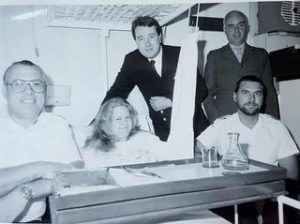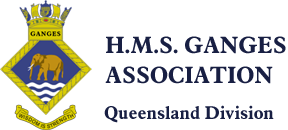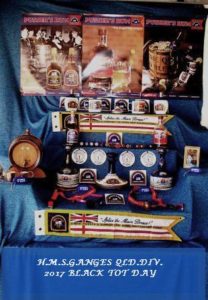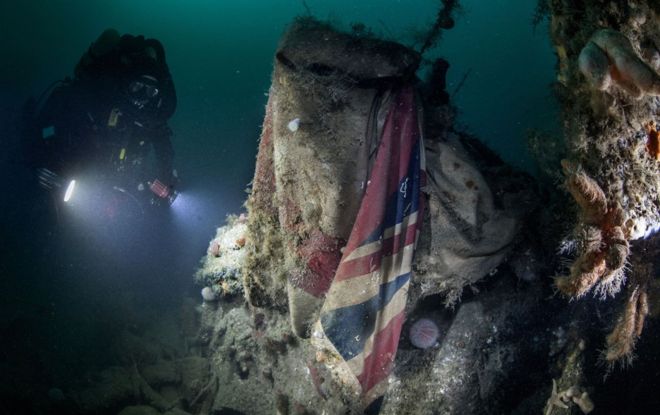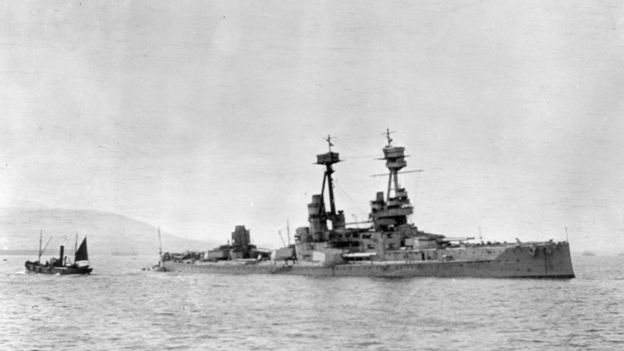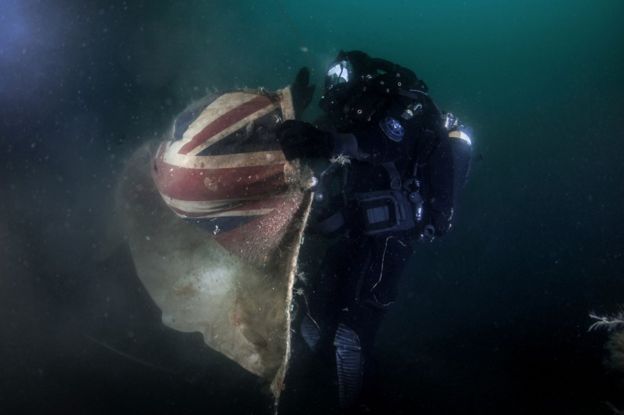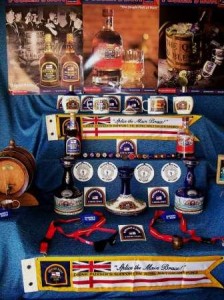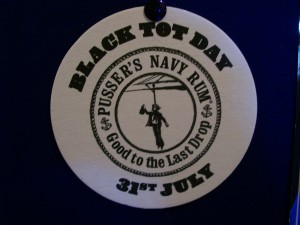WA DIVISION HOIST JULY 2017
|
G’day all,
Had an interesting visit to a dermatologist recently to check out a suspicious growth on my temple. The doc informed me it was a benign barnacle, when I asked if this was something old sailors are prone to get he did not seem amused. Anyway he burnt it off. As is my wont I googled barnacle and found it was a seborrheic keratosis, I’ll stick with barnacle.
This newsletter is the inaugural ‘Hoist’, Paul Chapman informs me that the pennant when hoisted signifies a message or information to follow. I thought this rather fitting. This first Hoist could also be the penultimate Hoist if members continue to sit on their hands rather than nominate for a position on the Division Management Committee at the AGM.
Gathering for 2017
| Committee Meetings
3rd Thursday of odd month
Commencing 1200 @ FNC |
Division Meetings
4th Thursday of odd month
Commencing 1200 @ FNC |
Social Sausage Sizzles
4th Sunday of even month
Commencing 1200 @ RNC |
| 20th July |
27th July |
27th August |
| 21st September |
28th September |
8th October * |
| *Changed to 2nd Sunday to avoid any Trafalgar Day clash |
| Annual Black Tot Day Lunch
1200 Wednesday 2nd August at FNC |
Christmas Lunch
1200 Wednesday 13th December at FNC |
|
|
|
|
Social Coordinator Hoists;
Quiz Night Rockingham Navy Club Saturday 17 June 2017.
Gail and Ian plus 2 of their friends joined Brenda, Brian and Paul to form the Ganges plus 2 Quiz team. After a brilliant 10/10 in the first round and a reward of chocolates things deteriorated somewhat and after 10 rounds we took out the penultimate place, earning a few more chocolates along the way. Not so good on the raffle prizes this time, only taking out 3. Still an enjoyable evening – it’s the taking part isn’t it? – not the winning –Yeah Right!!
Social Sausage Sizzle Rockingham Navy Club Sunday 25 June 2017.
Another fine day (they keep on coming) with a few clouds later on made for another pleasant afternoon being enjoyed by those present. A smaller than usual group this time enjoyed the excellent (thanks to all contributors) offerings. With Gary and Ian absent Brian nobly stepped up to the BBQ and did the honours with distinction. The onion problem is back, this time an excess, thanks Jim, they will not go to waste and I will not have to cry when making my winter soup. Rum Bosun Alex initiated ‘Up Spirits’ and with limited numbers the rum flask was passed round a good few times. Cathy ran the raffle this time and prizes were fairly well spread amongst the two organizations thanks to Anne from RRNA asking for redraws on the many occasions her tickets were drawn. No ‘Rum’ raffle this time due to limited numbers.
UPCOMING EVENTS.
Black Tot Lunch.
When 1200 Wednesday 2nd August 2017.
Where Fremantle Navy Club.
Cost $30
Menu Pumpkin Soup, Roast Pork or Roast Chicken, Veggies, Gravy, Apple Crumble and Custard.
Details The lunch will follow the previous format.
Dress Smart casual.
Important Note: Bookings required now. The cut-off date is Wednesday 19 July to book and indicate choice of roast. Those who wish to attend and have not already booked – names and choice of roast to me sooner rather than later by email or phone – jackrubb@optusnet.com.au or 95275857 This information is required by the FNC for catering purposes.
Visit to Charthouse Primary School. (Ref: May minutes – other business).
When 1000 Wednesday 16 August 2017 (Previous date fell during school holidays).
Where 43 Rand Avenue, Waikiki.
Dress Division shirts. (Better have something covering your nether regions as well or you may be arrested).
Details Knocker tells me that the school will be delighted to receive a visit from us and that a few RRNA members may join us. A lunch at a venue TBA will follow. More details TBA.
Budget Matters:
The AMA has weighed in on Scott Morrison’s proposed changes to Australia’s health services
The Allergists voted to scratch them, but the
Dermatologists advised not to make any rash moves.
The Gastroenterologists had a sort of a gut feeling about it, but the
Neurologists thought he had a lot of nerve.
The Obstetricians felt he was labouring under a misconception.
Ophthalmologists considered the ideas short-sighted.
Pathologists yelled, “Over my dead body!” while the
Paediatricians said, “Oh, Grow up!”
The Psychiatrists thought the ideas were madness, while the
Radiologists could see right through them.
The Surgeons were fed up with the cuts and decided to wash their hands of the whole thing.
The ENT specialists didn’t swallow it, and just wouldn’t hear of it.
The Pharmacists thought it was a bitter pill to swallow, and the
Plastic Surgeons said, “This puts a whole new face on the matter….”
The Podiatrists thought it was a step forward, but the
Urologists were pissed off at the whole idea.
The Anaesthetists thought the ideas were a gas, but the
Cardiologists didn’t have the heart to say no.
In the end, the Proctologists won out, leaving the entire decision up to the
arseholes in parliament!
Ever wondered why we ‘Toast’
The term ‘toast’, as in raising our glasses to honour or celebrate something before drinking, comes from a literal piece of spiced or charred toast that was dropped into cups or bowls of wine. The toast was either a form of hors d’oeuvre or added to make the wine taste better. (it wouldn’t have been much good in a tot of rum!). Shakespeare mentions this in The Merry Wives of Windsor, in which Falstaff calls for a quart of spiced wine, then adds; “Put a toast in it”.
By the 18th Century, the term “toast” had been transferred from the floating bread to the person honoured by the toast. Hence the particular popular person could become the “toast of the town”.
75 Years ago an attack on Sydney
On the night of 29 May 1942, five large Japanese submarines positioned themselves 56 kilometres north-east of Sydney Heads. At 0300 the next day one of the submarines launched a reconnaissance aircraft. After circling Sydney Harbour the aircraft returned to its submarine, reporting the presence of ‘battleships and cruisers’ moored in the harbour. The flotilla’s commanding officer decided to attack the harbour with midget submarines the next night. The next day the five submarines approached to within 11 kilometres of Sydney Heads, and at about 0430 they released three Ko-hyoteki class midget submarines which then began their approach to Sydney Harbour.
|
One of the three Japanese Ko-hyoteki class midget submarines is raised after the attack
|
| The third submarine was sighted by HMAS Yandra at the entrance to the harbour and was depth-charged. Some four hours later, having recovered, it entered the harbour but it was subsequently attacked with depth charges and sunk in Taylor Bay by vessels of the Royal Australian Navy. Both members of the submarine’s crew committed suicide
|
| The second submarine entered the harbour at about 9.48 pm and headed west towards the Harbour Bridge, causing a general alarm to be issued by the Naval Officer in Charge, Sydney. About 200 metres from Garden Island the submarine was fired on by the heavy cruiser USS Chicago. The submarine then fired its two torpedoes at the cruiser. One torpedo ran ashore on Garden Island but failed to explode. The other passed under the Dutch submarine K9 and struck the harbour bed beneath the depot ship HMAS Kuttabul where it exploded, killing 21 sailors (19 Royal Australian Navy and 2 Royal Navy). The submarine then slipped out of the harbour, its mission complete.
|
The outer-Harbour defences detected the entry of the first midget submarine at about 8.00 pm, but it was not identified until it became entangled in an anti-torpedo net that was suspended between George’s Head and Green Point. Before HMAS Yarroma was able to open fire the submarine’s two crew members destroyed their vessel with demolition charges and killed themselves.
Immediately following the raid, the five Japanese fleet submarines that carried the midget submarines to Australia embarked on a campaign to disrupt merchant shipping in eastern Australian waters. Over the next month, the submarines attacked at least seven merchant vessels, sinking three ships and killing 50 sailors. During this period, between midnight and 0230 on 8 June, two of the submarines bombarded the ports of Sydney and Newcastle.
The midget submarine attacks and subsequent bombardments are among the best-known examples of Axis naval activity in Australian waters during World War II, and are the only occasion in history when either city has come under attack. The physical effects were slight, the Japanese had intended to destroy several major warships, but sank only an unarmed depot ship and failed to damage any significant targets during the bombardments. The main impact was psychological; creating popular fear of an impending Japanese invasion and forcing the Australian military to upgrade defences, including the commencement of convoy operations to protect merchant shipping.
SS Yandra was a coastal steamer converted to a minesweeper and anti-submarine vessel and commissioned HMAS Yandra. HMAS Yarroma was a channel patrol boat of the Naval Auxiliary Patrol fitted with depth charges. HMAS Kuttabul was a converted ferry.
Centenary of the formation of the WRNS:
In 2017 the Royal Naval Service is celebrating the centenary of the formation of the Women’s Royal Naval Service (WRNS). It will also recognise the supporting role given by the WRNS to the naval service and acknowledge the transition made by women from the separate WRNS into the Royal Navy, and demonstrate the way in which the WRNS helped define the opportunities for women in today’s Royal Navy. The formation of the WRNS came at a fascinating time in our nation’s social history. Prior to the start of the First World War, the Suffragette movement had been lobbying the government for greater powers for women, but it was only as the war progressed that the role of women changed. By 1917 the Royal Navy was faced with a deteriorating manpower situation. The only option was for women to fulfil some of the shore jobs. The Admiralty decided to form a naval organisation for women, under the leadership of Dame Katherine Furse:
It became known as the Women’s Royal Naval Service (WRNS). Previously Dame Katherine had been the Commander-in-Chief of the Voluntary Aid Detachments who had provided field nursing services on the Western Front and elsewhere. She was the ideal candidate to become the first Director of the WRNS; her leadership and example quickly set the tone of the new service.
It was not long before the members of the WRNS became known as ‘Wrens’, with ratings often affectionately referred to as ‘Jenny Wrens’. The WRNS motto was ‘Never at Sea’ as the initial intention had been to employ Wrens in domestic or clerical jobs, such as cooks, stewards, clerks, writers and telephonists. With manpower shortages continuing, the Wrens soon found themselves taking on many more unusual jobs. These included sail-making, driving, maintaining aircraft, signalling and coding. They positively flourished with their newly-found confidence and worth. Some were even lucky enough to find themselves working overseas in Malta, Gibraltar and Italy. At the war’s end in 1918 the WRNS had approximately 5,000 ratings and nearly 450 officers.
| Competition to join the WRNS was very strong. Even after the National Services Act (conscription) was introduced in 1941, many women wanted to join the WRNS over the other Services. Like WWI, the aim had been to ‘Free a Man for the Fleet’ by offering the Wrens clerical or domestic jobs. But technology had moved on, and women knew they were capable of much more. New roles were offered such as Radio Operators, Meteorologists, together with sea-going Cypher Officers and Boat’s Crew Wrens. Demand continued to increase, with Wrens undertaking jobs outside the formal branch structures. Others found themselves working with the Royal Marines – a tradition that continues to the present day – while the Fleet Air Arm particularly sought Wrens out for supply or communications duties. Technical Wrens proved ideal for maintaining the Fleet Air Arm’s aircraft and the equipment carried on board. |
Some made the ultimate sacrifice, with the greatest single loss of life being on 19 August 1941 when 21 Wrens, twelve of whom had served together in Scarborough, were killed while on board the SS Aguila, heading for Gibraltar. This group of cypher officers and wireless operators had been the first to volunteer to serve abroad. Sadly, the ship was torpedoed and all the Wrens plus a QARNNS nursing officer travelling with the group were killed.
In 1949, in recognition of the outstanding service provided by Wrens it was announced that the WRNS would be permanently established. Although it retained a separate disciplinary code, the WRNS became an integral part of the naval service, along with the Women’s Royal Naval Reserve (WRNR) formed in 1952. A regular force of 3,000 was retained on the understanding that women would be excluded from seagoing, flying and weapons’ training roles. Despite many of the roles undertaken during the War being placed back in the male domain of the Royal Navy, change was inevitable. In 1970 a female meteorological officer embarked in a helicopter support ship, where she provided advice to flying operations. This event was closely followed by air mechanics who went afloat to support the helicopter squadrons, with other mechanics later taking part in a ‘trial’ sea deployment.
Formal integration of women began in 1976 with female officer training moving from the RN College, Greenwich, to Britannia Royal Naval College, Dartmouth. Five years later, initial ratings’ training moved from HMS Dauntless in Reading to HMS Raleigh, Cornwall, where they joined the men. By now, all women had been brought under the previously male only Naval Discipline Act. It wasn’t long before men and women trained together on their respective officers’ or ratings’ initial training courses. With everyone serving under the same Discipline Act, it paved the way for women to enter another area that had previously been the preserve of men: a major fleet establishment, HMS Mercury, welcomed its first female First Lieutenant in 1979. Eleven years later, a Chief Officer (Commander) was the first woman to take command of the Navy’s flagship shore establishment, HMS Warrior at Northwood. By now, changing employment expectations from both men and women was having an effect on naval recruitment.
The watershed moment for women serving in the naval service arrived in the early 1990s. The RN asked existing Wrens (officers and ratings) to volunteer for sea service; the first group joined HMS Brilliant in October 1990. Prior to the formal disbandment of the Women’s Royal Naval Service on 1 November 1993, women had already replaced their blue badges and stripes for the gold worn by the men. At disbandment, 4,535 women were integrated fully into the Royal Navy: their ‘supporting’ role had finally come to a proud end.
Snippits:
Progress:
| HMS Albion
The amphibious command ship HMS Albion has embarked her crew marking a major milestone in the ships multi-million-pound capability upgrade in Plymouth. Almost 350 Royal navy sailors and Royal Marines move onboard for the first time in almost six years, with the ship expecting to return to sea later this year. The 20,000 tonne ship has been undergoing a major package of work, dominated by an improved propulsion system and combat systems compared to her sister ship HMS Bulwark. The new combat computer ‘brain’ will manage the upgraded weapons and sensors, which includes a more capable surveillance radar and improved defensive weapon system |
Maiden Sea trials:
On 26th June HMS Queen Elizabeth left Rosyth, where she has been under construction since 2014, with 700 sailors and 200 industry contractors on board and embarked on her maiden sea trials. Over the last couple of months, the ship’s company has been getting to know the ship which has been assembled in Rosyth as part of the £6 billion programme to deliver the two largest ever warships for the Royal Navy.
Two Royal Navy ships, Type 23 frigates HMS Sutherland and HMS Iron Duke, are escorting the 65,000-tonne aircraft carrier as she conducts vital system tests off the coast of Scotland. Sutherland and Iron Duke, along with Merlin Mk2 helicopters of the Fleet Air Arm, are there to guard the seas as the trials of HMS Queen Elizabeth get under way.
Point to ponder!
Living on Earth is expensive, but it does include a free trip around the sun every year.
That’s all folks;
